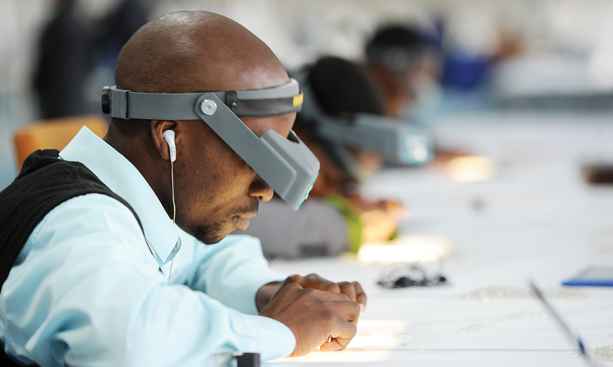… Leading to a 10 % jump in sales
The De Beers Group recently announced a sales rise of 10 percent across its rough diamond sales operation since mid-2018.
A report from Rapaport reveals that sales rose 10 percent year on year to USD 575 million in the third sales cycle of the year, including a recent sight in Botswana. “The figure was 16 percent higher than the USD 496 million it sold in the previous cycle,” continues the report.
De Beers Global Sightholder Sales in Gaborone saw a continuation of stable demand for rough diamonds in Cycle 3.
The demand was pushed forward by the market’s absorption of the smaller, lower-end diamonds. The Group had before the upsurge in demand, experienced a challenge with low demand for the Melee diamonds.
In November 2018, Rapaport alluded to a crisis in the small diamond market in the article ‘A crisis in Melee’, outlining the standout trends that had taken shape in the diamond trade for the year. At the top was the poor performance of small and cheaper stones.
“But the drop in the so-called melee market has not been sudden. Supply levels in the midstream were high during the 2008 financial crisis and have remained so since,” reads part of the article. It continues to state that inventory climbed significantly in 2017 as three new mines came on stream, leaving the market with an excess of available goods, leading to upwards of 20 percent drop in melee diamonds sales in 2018.
Though oversupply was one of the causes of the slump, the report revealed three other factors believed to have influenced the weakness in the melee market. One such was the liquidity in India which had tightened as banks had become more cautious in their lending to the industry as well as the sharp depreciation of the rupee in the same year. The third contributing factor was the advent of the wider acceptance of lab-grown diamonds.
Perhaps one of the contributing factors was the fact that some retailers were shying away from natural melee because of the threat of undisclosed synthetics as well as the element that a small but growing preference to use better-quality lab-grown melee rather than lower-quality natural stones that cost the same was had caught hold.
The De Beers outfit in Botswana, responding to questions from this publication last week explained that the recent growth spurt in Cycle 3 was an effect of the stabilisation in demand for the small diamonds. “We would expect over time that the recent challenges in this area would work out as the situation gradually normalizes,” it states.
Before the latest report, revenues were down 11% to $1.57 billion year-on-year for the first three sales cycles, with disappointing holiday retail sales and weakness in the Indian manufacturing market resulting in lower-than-usual demand at the first two sights.
The first quarter is usually one of the busiest periods of the year for the rough market as dealers and cutters replenish goods after the holidays.
“Last week’s April sight was the last of the current sales period, known as an intention to offer (ITO). De Beers will inform sight holders of their rough-diamond allocations for the new ITO ahead of the next sight, which begins May 13,” noted the office. The miner expects to reduce its rough supply to sight holders during the new ITO, as production is set to fall this year.
De Beers Group stated said the value of sales in any particular cycle is in part a reflection of how much of their annual allocation customers have planned into that cycle as well as factors such as the amount of demand that has been expressed over a longer period and the prevailing levels of inventory across the diamond pipeline and downstream demand for diamond jewelry.
Asked whether they anticipated the growth, the Group responded that, “Sales in Cycle 3 were broadly in line with expectation…”
They could not be brought to disclose how much of the Botswana diamonds contributed to the growth as the De Beers Group sells mainly aggregated production from mines in each of the producer partner countries in which it operates. These are Botswana, Namibia, South Africa and Canada.
“It is therefore not possible to state precisely which country of origin any share of sales came from,” was the response, continuing that, however, production from Botswana represents around two thirds of De Beers Group’s overall supply.
On what the increase in sales indicated to the company, they said Cycle 3 sales levels showed continued stability in demand for De Beers Group rough diamonds.
Going into the future, De Beers Group continues to invest across its operations to ensure long-term future success of demand for natural diamonds, from major investments in production capacity expansion, such as with Cut-9 at Jwaneng mine, to rough diamond distribution efficiency as well as major downstream consumer marketing initiatives.
